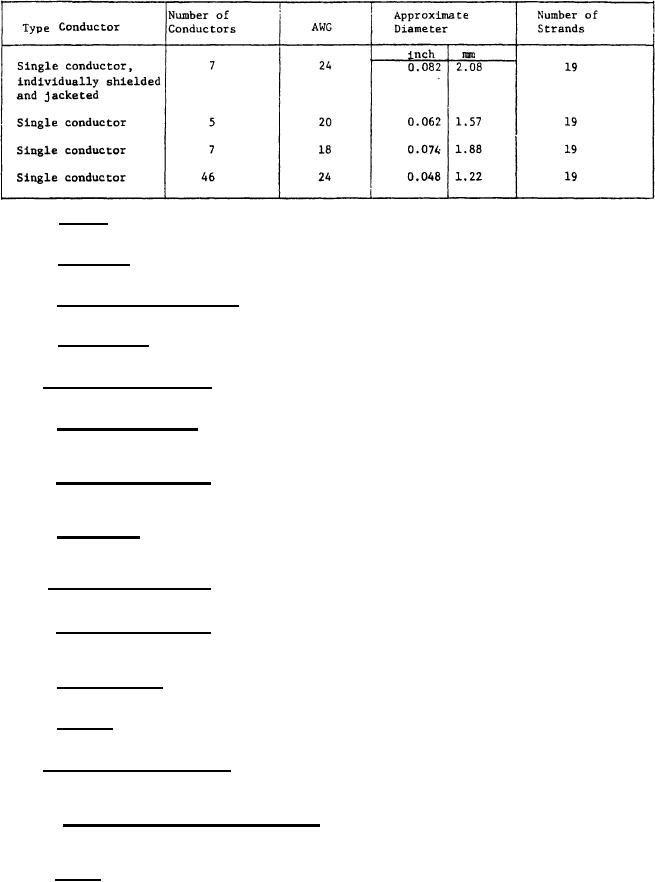
MIL-C-82630(OS)
TABLE II
3.3.6 Filler.
Glass fiber filler in accordance with MIL-Y-1140 shall be used as required
to make a compact circular cross section. A center filler core is acceptable.
3.3.7 End seals.
Unless otherwise specified, the end seals of the cable shall be as spec-
ified in MIL-C-915.
3.3.8 Dimensions and tolerances. The overall dimensions of the cable and the jacket wall
thicknesses shall conform to dimensions shown in Figures 1 and 2.
3.3.9 Wire splices. A cable length shall Include no wire splices, broken wires, broken
strands of wire, or other discontinuities.
3.4 Electrical requirements. The cables shall successfully meet the following electrical
requirements:
3.4.1 Dielectric strength. All lengths of completed cable shall withstand, without failure,
a 5-second application of a 1000-volt ac test potential, applied to each conductor sequen-
tially with all adjacent conductors and shields at ground potential.
3.4.2 Insulation resistance. Each length of cable shall show an insulation resistance of
at least 100 megohoms for 1000 feet with 500 to 750 volts dc applied to each conductor
sequentially with all other conductors and shields at ground potential.
3.4.3 Capacitance. The capacitance of each shielded lead in the cables with respect to its
shield shall be not less than 55 pf nor more than 90 pf per foot (300 pf per metre), when
measured at a frequency of 1 kilohertz (kHz)=20 Hz.
3.5 Mechanical requirements.
The cables shall be capable of meeting the following mechani-
cal requirements:
3.5.1 Cold temperature bend. The cable sheath, conductor insulation, and conductors
shall show no evidence of failure when the completed cables are subjected to the cold tem-
perature 90-degree bend test of 4.5.7.
3.5.2 Cable strength. The cable sheath, conductor insulation, and conductors shall show
no evidence of failure when cables are subjected to the strength test of 4.5.8.
3.5.3 Torsion. The cable sheath, conductor insulation, and conductors shall show no
evidence of failure when completed cables are subjected to the torsion test of 4.5.9.
3.6 Environmental requirements. The cables shall be capable of meething the other re-
quirements of this specification after being subjected CO the fallowing environmental con-
ditions:
3.6.1 Moisture penetration of cable jackets. The cable sheath, conductor insulation,
and conductors shall show no evidence of moisture penetration when completed cables are sub-
jetted CO the following conditions:
(a) Type I.
Immersion in salt water for 30 16-hour periods with 8 hours between immer-
sions.
5
For Parts Inquires call Parts Hangar, Inc (727) 493-0744
© Copyright 2015 Integrated Publishing, Inc.
A Service Disabled Veteran Owned Small Business